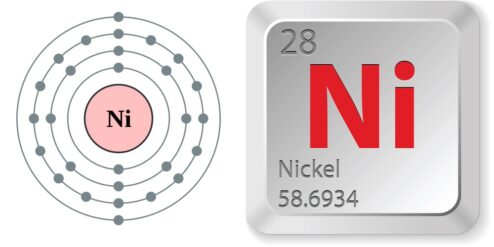Stainless steel is a widely used material in various industries due to its durability, corrosion resistance, and aesthetic appeal. Understanding its composition, including the presence of nickel, can help users make informed decisions about its use. This article explores whether stainless steel contains nickel, the role of nickel in stainless steel, the types of stainless steel and their nickel content, potential allergic reactions to nickel, and how to identify nickel-free stainless steel.
Understanding the Composition of Stainless Steel
Stainless steel is an iron-based alloy, which means it is a mixture of iron and other elements. The exact composition can vary, but the primary elements typically include iron, carbon, and chromium. Chromium is a crucial component that provides the corrosion resistance that is characteristic of stainless steel. Other elements that may be present include nickel, molybdenum, and manganese. The specific combination of elements can influence the properties of the stainless steel, including its strength, ductility, and resistance to heat and corrosion.
Does Stainless Steel Contain Nickel?
Yes, many types of stainless steel do contain nickel. The amount can vary depending on the specific type of stainless steel. For example, austenitic stainless steel, which is the most commonly used type, typically contains between 8 and 10 percent nickel. However, there are also types of stainless steel that are designed to be nickel-free for applications where nickel is not desired or where it may cause problems, such as in jewelry or medical devices.
The Role of Nickel in Stainless Steel
Nickel plays several important roles in stainless steel. It helps to enhance the material’s corrosion resistance, particularly in acidic and marine environments. Nickel also increases the alloy’s ductility, which is its ability to deform without breaking. This makes the stainless steel easier to form into various shapes and sizes. Additionally, nickel can improve the alloy’s resistance to heat and its overall strength.
Types of Stainless Steel and Nickel Content
There are several types of stainless steel, each with different compositions and properties. Austenitic stainless steel, as mentioned earlier, typically contains between 8 and 10 percent nickel. Ferritic stainless steel, another common type, contains little to no nickel. Instead, it relies on chromium for its corrosion resistance. Duplex stainless steel, which combines the properties of austenitic and ferritic stainless steels, typically contains a lower amount of nickel than austenitic types.
Potential Allergic Reactions to Nickel in Stainless Steel
Although nickel has many beneficial properties in stainless steel, it can cause allergic reactions in some people. Nickel allergy is one of the most common causes of contact dermatitis, a skin condition that can cause itching, redness, and blisters. This is particularly a concern for items that come into direct and prolonged contact with the skin, such as jewelry, watches, and medical devices.
How to Identify Nickel-Free Stainless Steel
Identifying nickel-free stainless steel can be challenging, as it often requires specialized testing equipment. However, some manufacturers and retailers may label their products as "nickel-free" or "hypoallergenic." It’s important to note that these terms are not regulated, so they may not always be accurate. If you have a nickel allergy, it’s best to consult with a medical professional or a knowledgeable retailer to ensure that the stainless steel product you’re considering is truly nickel-free.
Stainless steel is a versatile and durable material that is used in a wide range of applications. While many types of stainless steel do contain nickel, there are also nickel-free options available for those who are sensitive to this element. Understanding the composition of stainless steel and the role of nickel can help you make informed decisions about the use of this material.
Per approfondire:
- Nickel Institute: Stainless Steel: A comprehensive guide to stainless steel, including its composition and properties.
- American Academy of Dermatology: Nickel Allergy: Information on nickel allergy, including symptoms, causes, and treatment.
- British Stainless Steel Association: Types of Stainless Steel: An overview of the different types of stainless steel and their properties.
- National Institute of Health: Nickel and Skin Diseases: A scientific article on the relationship between nickel and skin diseases.
- Scientific American: Why Stainless Steel Resists Rust: An article explaining why stainless steel is resistant to rust, including the role of nickel.


